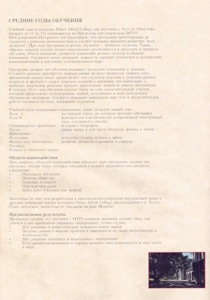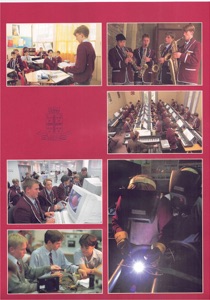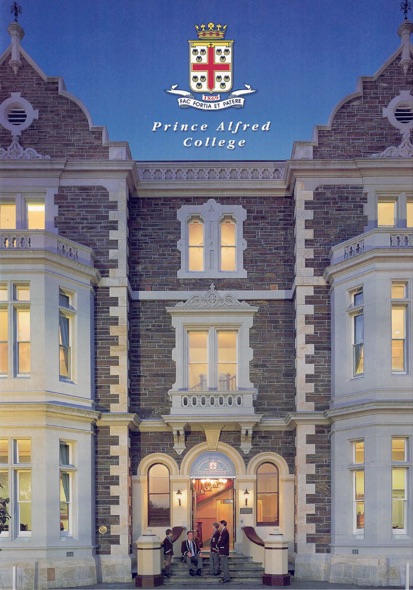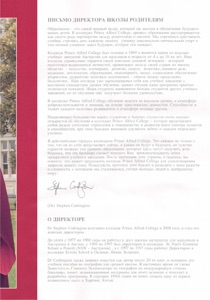Russia 2002

Russia 2002

I know that travel for business is often seen as glamorous, especially when it ventures into exotic parts of the world. That view is usually held mainly by those people who have never had to endure it.
This is a diary of one business trip in 2002 that was designed to recruit secondary school students from Russia to attend the school where I was Headmaster in Adelaide, Australia, at the time. If you are interested in the rationale for the trip and the business case behind it, read on. If you are just interested in the twists and turns of a very unusual trip through Russia in 2002, click HERE to go straight to the Day 1 travel diary.
This travel diary tries to share the experience of business travel rather than focussing on the value of the outcomes, which of course would be commercially confidential. For that reason, I have deleted references to clients and other commercially sensitive information (even though I have kept these notes confidential for almost 20 years following the trip before finally releasing this redacted version). Apart from such editing, this diary contains the verbatim notes I made each day while travelling.
The purpose of the trip was to embark on a ground-breaking initiative to recruit full-fee paying overseas students from Russia. As background, in 2002 (at the time of this trip) I had been the Headmaster of Prince Alfred College for almost three years. Prince Alfred College was (and is) a private, independent day and boarding school for boys, located in Dequetteville Terrace, Kent Town, an inner suburb of Adelaide, the capital city of the state of South Australia. Affiliated with the Uniting Church, it was established in 1869, and is regarded as one of the two highly prestigious boys’ schools in Adelaide (the other being St Peter’s College, situated just 1.5 kilometres to the north).
When I took up the position of Headmaster in January 2000, Prince Alfred College (PAC) had almost precisely 900 students enrolled. In spite of Adelaide’s stagnant demographics, I was able to increase enrolments steadily, reaching 932 by the start of 2001, 952 by the start of 2002, and 974 by the time of this recruiting trip to Russia.
According to the College’s strategic plan, the overseas student population should remain below 6% of total student population. In 2002, based upon then-current enrolments, we could therefore have up to 58 overseas students. At the time, we had 50 overseas students, of whom 6 were in Year 12 and therefore due to graduate at the end of 2002, with 25 in Year 11 who would graduate at the end of 2003. Given the length of time it took to issue student visas, I felt we needed to plan strategically for the replacement of the Year 11 group to avoid a dip in revenue.
Of the 50 overseas students we had at the time, 20 had been recruited directly as a result of marketing fairs in which I had participated (mostly in China). These fairs had been shown to be the most effective way of recruiting students because parents understandably want to meet the Headmaster when they are sending their child to another country, and moreover, they provided the means to control the quality of the students recruited rather than leaving this in the hands of third-party agents.
At the time, Prince Alfred College was attracting attention for its innovation. We had developed and introduced a new Strategic Plan, introduced a highly effective incentive awards program that stimulated student effort and achievement in the classroom, introduced the Einstein Program to enhance opportunities for Gifted and Talented students, developed and introduced the nationally-acclaimed, ground-breaking Eudemology program, and embarked on several overdue major building programs. The innovations attracted national attention, resulting in Prince Alfred College being named one of “Australia’s Top 10 Schools” by ‘The Australian’ newspaper during three of the five years in which I was Headmaster there, something that has not been repeated before or since. We even introduced Adelaide’s first television advertising for a school.
How did the idea of recruiting students in Russia arise? In June 2000, I had attended a meeting in Sydney conducted by the Eurolink division of Austrade (Australian Trade Commission) on the theme of recruiting students from Europe. A similar briefing had been held in each state capital city except Hobart and Adelaide. I was especially keen to investigate the potential of recruiting students from Eastern Europe, which had began emerging as a significant market for New Zealand schools while I was working there before my appointment to PAC. However, the potential of neither Eastern Europe nor Russia had yet been recognised by schools in Australia. Interestingly, the only other representative present from the secondary education sector in South Australia at the Sydney meeting was from the State Department of Education, although schools from elsewhere were very well represented.
The briefing confirmed the significant potential of the Eastern European market (as well as the extremely limited opportunities in other parts of Europe for secondary recruitment). Some key points about the Russian educational market at the time were:
-
•Change was an expected way of life in Russia. Over 30% of students were now learning English as a second language, and it was seen as the key to a senior positions with an international companies at home or abroad.
-
•Western education was highly regarded.
-
•The growth in student numbers from Eastern Europe to Australia over the two years 1997/98 to 1999/2000 had been 144% (833 to 2030). The growth was expected to continue, and to expand in the area of secondary education.
-
•AusTrade had targeted Europe as a growth area for student recruitment and was investing heavily to support its growth. Its target was to double the number of European students to Australia over the coming three years (from 8,000 to 16,000), with much of that growth coming from Russia and Eastern Europe. AusTrade intended to achieve this by capturing market share from competitors, especially in the USA and Canada.
-
•2002-2003 was to be the final year that schools could receive the maximum 50% AusTrade rebate for costs incurred in overseas marketing.
-
•Education was seen as serious in Russia – a part of personal development.
-
•Students from Russia tended to have a strong grounding in education, including language learning. As a generalisation, they tended to integrate into Australian school environments more easily than students from Asia and had smaller cultural hurdles to overcome.
-
•Australia was still relatively unknown as a study destination in Russia. Targeted promotion should therefore pay good dividends.
I undertook a SWOT analysis (Strengths, Weaknesses, Opportunities, Threats) for the Eastern European market as follows:
STRENGTHS
-
•Australia is seen as an English-speaking country with high educational standards
-
•Favourable climate and lifestyle
-
•New place offering adventure and different experiences
-
•Young/free attitudes
-
•Good opportunities for work and tertiary study
-
•Cost competitive
-
•At PAC, the option of International Baccalaureate would be appealing
-
•PAC is close to the city centre
-
•We can offer boarding accommodation
-
•Ready access to well resources research resources and facilities
-
•Open spaces, uncrowded study environment
WEAKNESSES
-
•Lack of knowledge about Australia and Australian education
-
•Costs may be considered high for an ‘unknown’ education system (i.e. tuition, administrative procedures such as visas, health checks, etc)
-
•Distance from Europe
-
•Need to establish incentives for agents
-
•Lack of scholarships (offered especially in USA and Canada)
-
•Visa inflexibilities
-
•Need to develop our promotional material in local languages (although Austrade would provide assistance here at very low cost).
OPPORTUNITIES
-
•2000 Olympics – high awareness of destination
-
•Education workshop was scheduled for several cities across Russia in October 2002
-
•Specialised areas of study (such as English language, technology, industry linkages, IB)
-
•Russia is internationalising and recognising the benefits of studying abroad
-
•Students are now looking to acquire English language skills and studies in English
-
•Airlines are becoming interested in the student market; opportunities for sponsorship
-
•Rises in fees for overseas students in some competitive markets, e.g. UK, Germany
-
•Visitors able to stay for 12 weeks on a tourist visa
-
•Intending students are able to apply for a student visa in Australia
-
•Australia is a stepping stone for Europeans into Asia – a Western culture in the Asian region offering Asian languages, Asian cultural studies, Asian business studies and even the opportunity of undertaking part of study in an Asian country
THREATS
-
•Increasing competitor activity (especially from the UK, USA and Canada)
-
•Continental European educators are providing better responses to student and industry demand (many courses now taught in English)
-
•Visa cost, difficulties, delays
-
•Local agents are not all pro-Australia
-
•Distance education
Taking everything into account, I proposed that the PAC Council approve the College’s (and thus my) participation in the AusTrade recruiting drive in Russia. The Council approved the recommendation on the bases of the obvious considerable potential of the exercise to generate ongoing fee income, especially in view of the previous successes I had achieved by attending recruitment fairs in China. It helped that all but the last few days of the recruiting fair fell during the school holiday period when my presence on campus would not be widely expected anyway, and that 50% of the costs would be reimbursed by AusTrade. Naturally, it was agreed that to minimise costs, all my travel would be undertaken in Economy Class.

Introduction and Background

Введение и предыстория
Click HERE or the image above to download the Prince Alfred College 2002 brochure in Russian (PDF format, 5.8 MB), or any page below for a JPEG image of that single page.






















